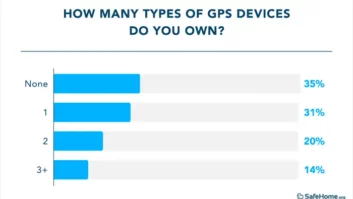
A newly launched research effort by the National Retail Federation to gauge consumer behavior debunks the notion that brick-and-mortar shopping is defunct.
The inaugural “Consumer View” report, prepared in tandem with Toluna Analytics, finds that despite the growth of e-commerce, only about a fifth of U.S. consumers are primarily online shoppers. More than three-quarters are shopping at brick-and-mortar stores just as much as or more than they did a year ago.
According to the report, only 21 percent of consumers surveyed are primarily online shoppers, defined as those who purchase more than half of their items online. By contrast, 79 percent said they purchase half or less of their items online. Among millennials and Generation Z consumers, 34 percent are primarily online shoppers, but the majority still make most of their purchases in stores.
Demographically, those who shop primarily online are younger, wealthier and more likely to live in a larger city. The survey found 49 percent are aged 18 to 34, compared with 72 percent of in-store shoppers aged 35 or older, while 53 percent of the online shoppers make $75,000 a year or more and 71 percent of in-store shoppers make less. Fifty-three percent of online shoppers live in a city of 50,000 people or more while 63 percent of store shoppers live in a smaller community.

See also: Behold The Retail Renaissance
Of those surveyed, 43 percent bought their consumer electronics products primarily in stores, 18 percent bought primarily online, and 39 percent said they purchased equally in-store and online.
In other categories, 86 percent bought groceries in-store; 65 percent purchased home-improvement items and tools in-store; and for clothing, 49 percent in-store, 13 percent online and 39 percent equally.
Online shopping scored high for books, music and video games, with 37 percent primarily online, 27 percent in-store, and 36 percent split.
Among shoppers overall, 69 percent said they go to a store because they need something right away and 65 percent wanted to see an item before purchasing. Among millennials, 55 percent go to stores as a social activity, 50 percent to pick up an item bought online and 44 percent to talk to a sales associate. In both groups, 66 percent said they go to stores simply because they prefer to shop in stores.
Compared with a year ago, 50 percent of all consumers said they shop in stores about the same amount, while 28 percent said they do so more often. Only 22 percent shopped in stores less often. Among millennials, 34 percent are shopping in stores about the same but 49 percent are doing so more often and only 17 percent less often. Millennials said they go to stores more often because a new store had opened, for entertainment or food options or because they are picking up items bought online.
See also: More Than Half Of Retailers Investing In Mobile This Year
The survey found that consumers like technologies that transform the store experience. For consumers who had tried buy online, pick up in store, 68 percent said it improved their shopping experience. Similarly, 66 percent of those who had tried in-app store navigation and 65 percent of those who had used mobile payment while shopping said it had a positive impact. Other innovations have made less of an impression, with 44 percent saying in-store digital displays had no impact on their shopping experience and 43 percent saying the same about the use of tablets of smartphones by store associates; the same number dismissed messaging apps.
“This report shows that the brick-and-mortar store is still the cornerstone of American retail and likely will be for many years to come, as consumers seek authentic interaction and experiences with retailers,” Shay said. “Despite the changes in our industry, there is an appeal to seeing and touching merchandise in person and being able to engage with fellow human beings that has yet to go away. Even younger shoppers see the value of the store.”
NRF will update the “Consumer View” report quarterly. Toluna surveyed 3,002 consumers for NRF between July 20-25 to produce the initial edition. The results have a margin of error of plus or minus 1.8 percentage points, according to NRF.














